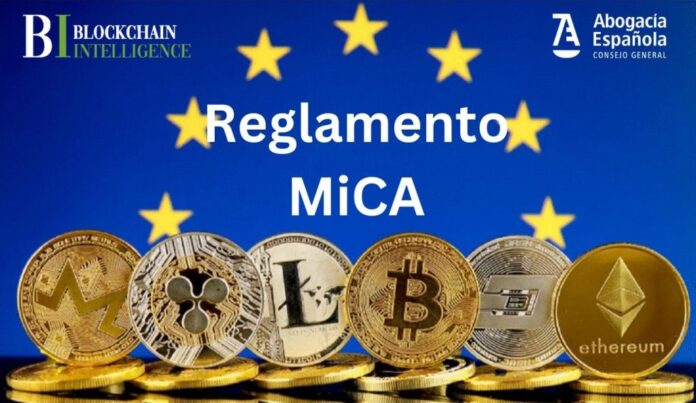The cryptocurrency market has finally become regulated (or quasi-regulated) with the entry into force of the European MiCA (Markets in Crypto-assets Regulation), the long-awaited regulation on the crypto-asset market. Reality and wisdom have come together.
The radical significance of this regulation lies in the fact that, in addition to the EU’s own legislative goals, the proposed formula represents an attempt to harmonise in a single text the various regulatory acts currently in force in all 27 countries of the European Union (EU). Spain has been a pioneer in this regard, as since May 2021, the Central Bank has been maintaining a special register in which organisations providing virtual currency exchange services for fiat currency (FIAT) and organisations providing electronic wallet storage services must be registered.
Thus, the initial goal is simply to protect and create legal certainty for both investors and consumers and users of crypto assets, since the DEFI (Decentralised Finance or financial system based on blockchain technology) system is focused not only on cryptocurrencies, but also on other related financial products. It is worth remembering that exchanges in practice function as banks in a system parallel to the official one.
Thanks to this standard legal application, more effective control over the issuance of cryptocurrencies and all types of crypto assets that circulate freely within the European Union will be ensured. The guarantees and transparency of a regulated market will allow rules to be established throughout the European Union. The MiCA Regulation is also part of the European Commission’s digital finance package aimed at combating money laundering and terrorist financing.
The legal implications of the MiCA Regulation are significant, as the DEFI market, where cryptocurrencies are the main players, is attracting increasing interest, especially at a time when the US is preparing to create a sovereign wealth fund and the price of Bitcoin exceeded $100,000 several weeks ago. In other words, investing in cryptocurrencies is not only a matter for consumers and users, but also for governments and institutions.
From a practical point of view, on the one hand, the real consequences for crypto-asset issuers are that, from the moment the regulation comes into force, they will have to apply for authorisation from the competent regulatory authority of the EU Member State in which their office is registered and fully comply with the legal and financial requirements relating to the type of crypto-asset.
Beyond purely commercial considerations, the special authorisation that crypto-asset providers will have to obtain and the legal implications of their commercial activities will have consequences not only in their country of origin but throughout the EU, ensuring and leading to greater protection and transparency in the markets.
The regulation will govern an asset market that is highly volatile and could be labelled a high-risk investment. You have clear rules from the outset, and at the European level, this gives consumers greater legal certainty with instruments that guarantee their rights even in court. For example, cryptocurrency users will have access to internal complaint mechanisms similar to those already in place in the traditional banking system, known as the banking ombudsman.Investors, whether in Bitcoin or other digital currencies, will have more tools at their disposal to protect themselves from fraud and will be protected by regulation. Thus, from a legal point of view, investing in cryptocurrencies will become safer after the MiCA Regulation comes into full force.
Harmonising European regulation of cryptocurrency markets does not mean that transactions will be risk-free or that the volatility with which cryptocurrencies are traded will disappear overnight. It is well known that their very financial nature carries countless risks.
In an environment of uncontrolled growth and decline in the price of Bitcoin in a ‘FAR WEST’ style volatility scheme, investors and users face a number of risks. Investors and users face a very high degree of risk, whereby they could lose huge sums if the price of the crypto asset or cryptocurrency they have purchased falls.
ALEXANDRO KLOCk VARAS
INTERNATIONAL LAWYER
Mediator in civil and commercial matters
info@alejandroklock-lawyer.com



